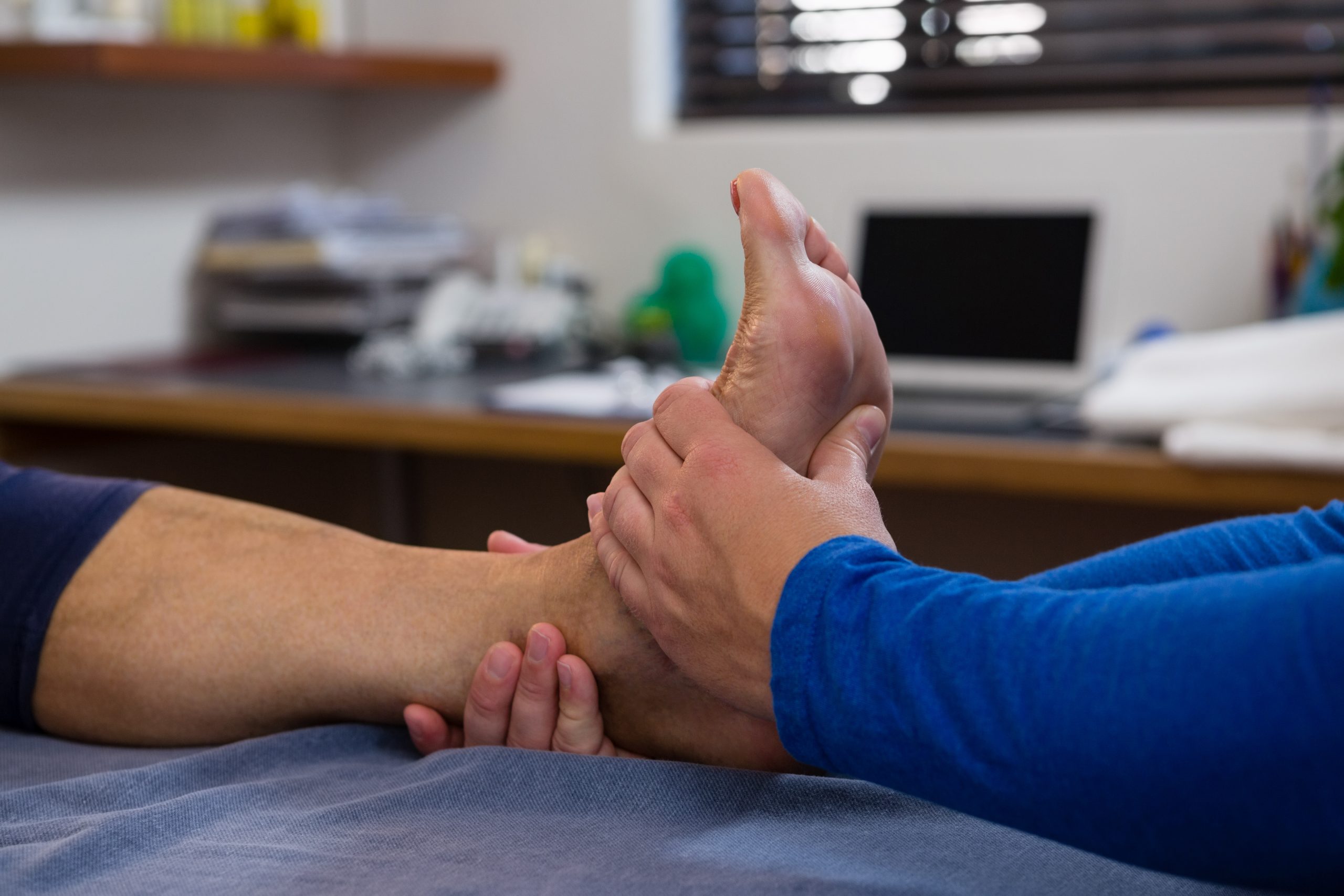
09 Mar Did You Sprain Your Ankle? Here’s Why It Can be Serious – and What to Do Next
Although sports that require quick stops and starts, jumping, and running (think basketball, tennis, baseball, soccer, and more) can increase the risk of a sprained ankle, if you’re talented enough, you can manage to sprain your ankle just going for a walk around the neighborhood if you step off the sidewalk wrong. “Spraining an ankle” is such a common injury term that it’s easy to forget it’s a serious injury you need to treat carefully to make sure it heals well. We break down what happens when you sprain your ankle, as well as the best ways to treat this frustrating injury.
What Is It?
A sprained ankle can result from many different situations, whether you’re engaged in a sporting activity or just plain bad luck in your normal routine. This injury results from the ankle’s supportive ligaments being forced past their normal range of motion, according to the Mayo Clinic. Typically, the ligaments on the outside of your ankle are most often affected in this type of injury. You’ll sprain your ankle by rolling, twisting, or awkwardly turning it and overstretching those ligaments. According to the Mayo Clinic, a sprained ankle has the following symptoms:
- Pain on the affected ankle, especially when you put weight on that foot
- Swelling
- Bruising
- Ankle instability
- Popping sensation at the time of the injury
What Should You Do?
You should immediately stop the activity that led to your sprain. Don’t try to push through pain and finish your game, run, or whatever caused the problem. At home you can also apply ice to the ankle for swelling, as well as rest from your usual fitness activities, or wrap the joint comfortably for support. Beware the pitfalls of trying to jump back into your normal routine! Many people feel better and overdo it, which leads to a re-injury and/or more severe problems than their initial sprain. Multiple sprains on the same ankle leads to a less stable joint over time, so it’s better to avoid this scenario by taking your time and healing properly.
Seeing a physical therapist is a great way to ensure that your recovery is on track and that you will reduce the risk of future injury and sprains. Within a couple weeks you can begin gradual weight-bearing, strength work, and light stretching under your PT’s care. A physical therapist will develop a customized treatment plan: you’ll work on healing your ankle, while also addressing knee and hip function which will help stabilize your ankle, as well as balance, and injury prevention once you return to your daily and fitness activities. While you can work on preventing some ankle sprains by making sure your kinetic chain works well, some are just the result of bad luck in daily life, e.g., falling off a curb, stepping on a child’s toy, etc. Talking to your physical therapist about ways to improve your ankle stability and injury prevention is one way to safeguard against this common injury.
Sick of missing your training days with a bum ankle? Tried a store ankle-brace with no luck? Try Body One Physical Therapy instead. We’re locally-owned with four locations serving Central Indiana, making it easy to find one that fits your busy schedule: North Indianapolis/Carmel, Fishers, and Zionsville. Our highly-trained, compassionate providers work with clients of all activity levels and ages and are experienced treating everything from a sprained ankle to post-surgical recovery. We also offer programs targeted at prevention: the Performance Ability Testing program is designed for serious athletes, weekend warriors, and anyone wanting to improve health while they hit the gym. Learn more online or talk with our team. Don’t put off feeling better: help is just a phone call away or click away!






